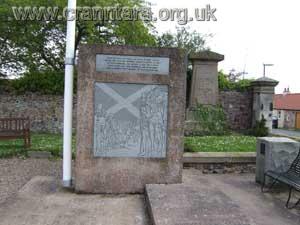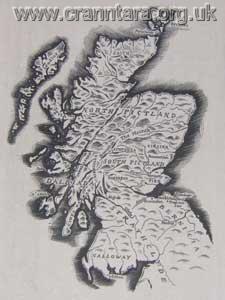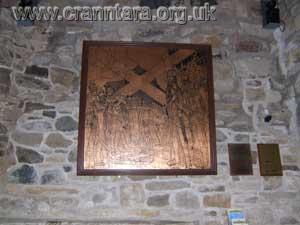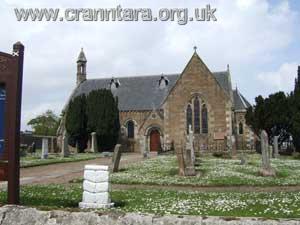|
 |
TOURISM - SCOTLAND CENTRAL |
ATHELSTANEFORD |
The Legend of the Saltire The St Andrew's Cross or Saltire is Scotland's national flag. Tradition has it that the flag, the white saltire on a blue background is the oldest flag in the Commonwealth and Europe. It originated in a battlefought in East Lothian in the Dark Ages. It is believed that the battle took place in the year 832AD. An army of Picts under Angus mac Fergus, Hig King of Alba |
 |
| and aided by a contingent of Scots led by Eochaidh, King of Dalriada (Kenneth mac Alpin's grandfather) had been on a punitive raid into Lothian (then and for a long time afterwards Northumbrian territory), and were being pursued by a larger force of Anglo Saxons under one Athelstan. |
 The memorial at Athelstaneford. |
The Albannach/Scots were caught and stood to face their persuers in the area of Markle, near modern East Linton. This is to the north of the modern village of Athalstaneford (which was rested on higher groundin the 18th century), where the Peffer, which flows into the Firth of Forth at Aberlady, forms a wide vale. Being then wholly undrained, the Peffer presented a major obstacle to crossing and the two armies came together at the ford near the present day farm of Prora (one of the field names there still is in the Bloody Lands). Fearing the otcome of the encounter, King Angus led prayers for deliverance and was rewarded by seeing a cloud formation of a white saltire (the diagonal cross on which St Andrewhad been martyred) against the blue sky. The King vowed that ifwith the saint's help he gained victory then Andrew would thereafter be the patron saint of Scotland. The Scots did win and the Saltire became the flag of Scotland |
| When Kenneth mac Alpin who may have been present with his grandfather at the battle , later united Picts and Scots and named the entity Scotland. Andrew did indeed become the patron saint of the united realm. Kenneth mac Alpin King of Scots and Picts, Ard-righ Albainn was laid to rest on Iona 860AD. |
|
THE MEMORIAL The Saltire Memorial is located at the south east corner of the graveyard. Built in 1965 to a design by the late Dr F.R Stevenson, and comprehensively restored in 1993. It consists of a battlescene carved in granite within a textured concrete plinth. The main panel shows the two armed hosts facing each other, the one about to claim victory, the other already accepting defeat, under the sign in the sky of the St Andrews Cross. The inscription on the Memorial is as follows:- TRADITION SAYS THAT NEAR THIS PLACE IN TIMES REMOTE PICTISH AND SCOTTISH WARRIORS ABOUT TO DEFEAT AN ARMY OF NORTHUMBRIANS, SAW AGAINST A BLUE SKY A GREAT WHITE CROSSLIKE ST ANDREWS, AND IN IT'S IMAGE MADE A BANNER WHICH BECAME THE FLAG OF SCOTLAND. |
 How Scotland was in that period |
 Plaque inside the Doocot |
THE DOOCOT Doocots such as at Asthelstaneford were once common in Scotland, but are now rapidly disappearing from the rural scene. The doocot-"dovecote" in England - has a long history. To the Romans it was a columbarium, to the French they were colombiers. The Normans introduced them to these islands and they were soon to be found as far north as Caithness. The doocot at Athestaneford is one of the earliest surviving examples from the 16th century. Built in 1583 by George Hepburn whose son, Sir John Hepburn, was founder and first colonel of the Royal Scots. |
 The Church at Athestaneford |
| It is well worth a visit and don't forget to visit the chuch with it's beautiful stained glass window of St Andrew. |
|
